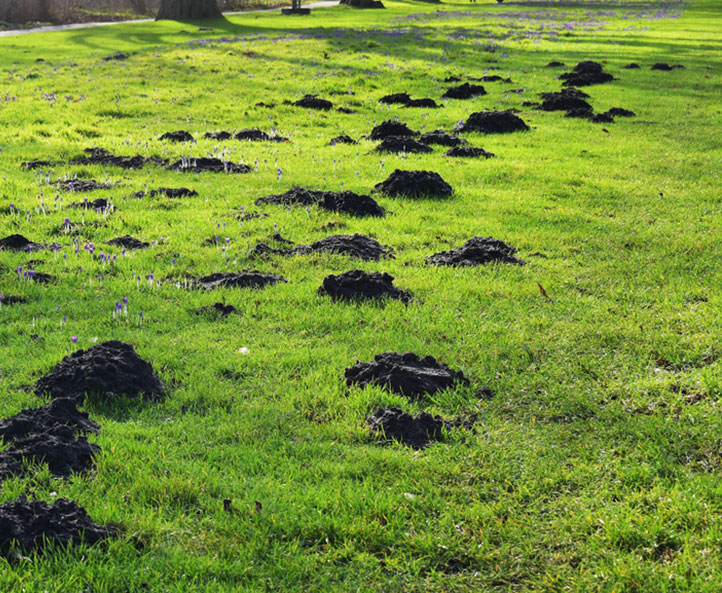The spruce spider mite (Oligonychus ununguis) is quite small; about the size of a pollen grain. Symptoms include bronzing and yellowing of needles and may show up later than damage actually occurs. To test for an infestation, tap a branch while suspending a white sheet of paper underneath. Specks that move are probably spider mites. Most active during the spring (March – mid-June) and fall (September – October), these cool-season mites spend the summer as eggs. Control can be difficult becuase mites are more closely related to spiders than insects. In addition, the density of the plant offer protection from insecticides. The oldest and possibly best form of control is by spraying the plant a few times per week with a very sharp spray of water. Enough force will usually knock the mites off the plant, thus discouraging them from feeding on the particular plant.
Aspen Lawn & Pest Control – Landscaping Company in Overland Park
As an Overland Park lawn fertilization company and lawn seeding company in Overland Park, we handle every facet of lawn care. Aspen provides our customers with lawn mowing services, lawn fertilization, landscaping design, landscape maintenance in Overland Park. We are also an industry-leading pest control company in Overland Park. Whether you’re looking for flea and tick control, Mosquito Armor®, treatment for pests infecting your trees or shrubs, or need indoor pest control in Overland Park to remove ants, spiders, and insects, Aspen can help!

Contact us today if you need a sprinkler installation in Overland Park or lawn care in Overland Park.
Our Overland Park pest control company is here to help! From spider control to mosquito control in Overland Park!
Aspen Lawn and Pest Control
Kansas City and Overland Park, KS
1265 N Winchester St.
Olathe, KS 66061

Socials